.jpg)
.jpg) Dear Members:
Dear Members:
As I write this, I’m preparing to travel to New Orleans for the annual National Proton Conference (NPC). It should be the most comprehensive and informative conference to date. The number of National Association for Proton Therapy (NAPT) members worldwide is growing exponentially, and because proton therapy is expanding so rapidly in acceptance and use, the number of companies designing and manufacturing components and services related to proton therapy is also growing rapidly. The exhibition halls should be filled with exciting new and developing ideas and products.
All the major cancer centers will be represented. Physicians, scientists, and business leaders from around the world will be presenting. Topics will include:
- Proton therapy insurance coverage legislative efforts
- Developments in proton therapy research
- Clinical and technological advances in proton therapy
- Changes in the healthcare landscape and the impact on proton therapy
- Mobilizing the patient community
- NAPT survey results
- An overview of the 2015 published proton therapy evidence
- A global perspective on proton therapy
- And a whole lot more …
I’m excited to reconnect with friends and acquaintances and am looking forward to meeting others in the proton community. We will report on the NPC in our March BOB Tales. I’m sure there will be much to talk about.
In this issue of our newsletter, we write about a major worldwide expansion of proton therapy; new proton centers are being announced monthly. According to The Wall Street Journal, six new proton centers are scheduled to open in the U.S. this year and ten additional centers by the end of 2018, bringing the national total to 30.
Despite opposition and distorted reporting from some in the media and those who compete with proton therapy, clinical evidence is mounting to support what we all know—proton treatment is the most effective form of radiotherapy for destroying cancer, preserving healthy tissue, and minimizing the chance of secondary cancers later in life. We have come a long way since I was treated more than fifteen years ago at the only U.S. operating proton treatment facility at the time—Loma Linda University Cancer Center.
The debate over prostate cancer screening rages on. As you will see, much of our news section is focused on this issue. Astonishingly, consideration is being given to penalizing doctors for ordering prostate cancer tests, including the simple digital rectal exam. True, new prostate cancer cases are declining—but for the wrong reason. Some experts report that, because fewer men are being screened for prostate cancer, the number of undiagnosed cases of metastatic prostate cancer are increasing, as well as the number of prostate cancer deaths.
In the meantime, while federal agencies are recommending against prostate cancer screening, the Associated Press reported just this week, that cancer has surpassed heart disease as the number one killer in 22 states, including my state of Massachusetts. It seems to me we have our priorities a little mixed up.
On a happier note, Deb and I had the honor of interviewing one of our most distinguished BOB members this month. He’s a man who has been a close friend of several U.S. presidents, dined with Queen Elizabeth, met with Pope Benedict XVI, Nelson Mandella, and other world greats. He is a high-ranking United Nations official, and a United States Ambassador. He has made his mark on this world in more ways than we can count, and he continues to do so at age 78. In this month’s BOB Tales you will learn, not just about his public record, but about the personal side of this extremely influential, affable … and humble man.
As always, we welcome your feedback and suggestions for future newsletters. Just send an email to [email protected].
Bob Marckini
To print the BOB Tales newsletter or view the newsletter with a larger font size, click here for the PDF file.
In This Issue:
- Debate over PSA screening continues—but why?
- Doctors could be penalized for ordering prostate tests
- Prostate cancer screening: Don’t abandon DRE, says expert
- New blood test could replace PSA test
- World’s first proton center for children
- Several new proton centers announced
- PSA bumps—usually false alarm
- National Proton Conference 2016 in days—Bob Marckini to receive Lifetime Achievement Award
- BOB reunion, Sedona, AZ
- BOB member, Ambassador Joseph Verner Reed
- Best and worst foods for preventing colon cancer
.jpg)
Debate Over PSA Screening Continues—But Why?
We have heard from dozens of members on this subject over the past year. Articles regularly appear in the media regarding the United States Preventive Service Task Force’s (USPSTF) recommendation to terminate prostate cancer screening and the resultant decline in newly diagnosed prostate cancer patients. Is this good news or bad news? BOB member Pat Greany, a Ph.D. biologist and retired USDA Research Entomologist and Courtesy Professor at the University of Florida, examines this subject in light of some recent media attention.
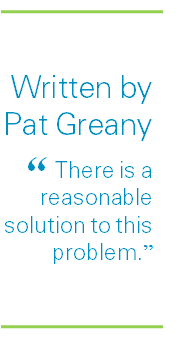 A recent article in The Wall Street Journal, “Number of Men Diagnosed with Prostate Cancer Drops,” has sparked considerable controversy. The WSJ article references a November 17, 2015 paper by Jemal et al. in The Journal of the American Medical Association (JAMA) that states, “Both the incidence of early-stage prostate cancer and rates of PSA screening have declined and coincide with (the) 2012 USPSTF recommendation to omit PSA screening from routine primary care for men. Longer follow-up is needed to see whether these decreases are associated with trends in mortality.”
A recent article in The Wall Street Journal, “Number of Men Diagnosed with Prostate Cancer Drops,” has sparked considerable controversy. The WSJ article references a November 17, 2015 paper by Jemal et al. in The Journal of the American Medical Association (JAMA) that states, “Both the incidence of early-stage prostate cancer and rates of PSA screening have declined and coincide with (the) 2012 USPSTF recommendation to omit PSA screening from routine primary care for men. Longer follow-up is needed to see whether these decreases are associated with trends in mortality.”
This article was critiqued in an accompanying letter by Sammon et al. that states “The USPSTF has issued a ‘grade D’ recommendation against PSA screening for all men, regardless of age.” Sammon points out some of the limitations in the Jemal study, and indicates that especially younger men, at the advice of their physicians, are following the USPSTF guidelines and are not being screened.
In an accompanying editorial in JAMA Dr. David Penson indicated, “there is reason to be concerned about the decline in prostate cancer screening and prostate cancer incidence reported by Sammon et al. and Jemal et al.” and states, “It is time to accept that prostate cancer screening is not an ‘all-or-none’ proposition and to accelerate development of personalized screening strategies…”
Dr. William Catalona, the developer of PSA-based screening, stated, “Eliminating screening eliminates over diagnosis, but by 2025 there could be twice as many metastatic cases of prostate cancer and a 13-20 percent increase in preventable prostate cancer deaths.” He also states that based on 233,000 new prostate cancer cases predicted in 2014 in the U.S., this trend could translate to 14,000 additional higher-risk prostate cancer diagnoses in 2014 as compared to 2011 and that “at least 1,400 additional men might die from prostate cancer each year.”
According to Dr. Peter Scardino of Memorial Sloan Kettering, metastatic cancer is manageable but not curable, so it is critical that men discover it before it metastasizes!
Here are two real-life examples of very young men who discovered they already had advanced prostate cancer while still in their early- to mid-forties:
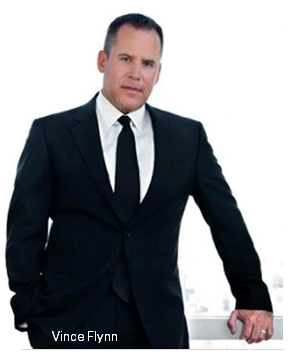 Prominent author Vince Flynn, who published 14 incredibly successful Mitch Rapp spy novels, died at 47, just three years after being diagnosed with advanced metastatic prostate cancer. Sadly, even the superlative skills of Dr. Eugene Kwon and his colleagues at the Mayo Clinic in Rochester, MN, to whom Vince dedicated his last book “Kill Shot,” weren’t great enough to save him. If only he had been tested earlier, he might still be with us today.
Prominent author Vince Flynn, who published 14 incredibly successful Mitch Rapp spy novels, died at 47, just three years after being diagnosed with advanced metastatic prostate cancer. Sadly, even the superlative skills of Dr. Eugene Kwon and his colleagues at the Mayo Clinic in Rochester, MN, to whom Vince dedicated his last book “Kill Shot,” weren’t great enough to save him. If only he had been tested earlier, he might still be with us today.
Recently, I had the good fortune to meet Col. Paul J. Taylor of the U.S. Army, who was diagnosed with Stage 4 prostate cancer at age 41 while serving in Afghanistan. Thankfully, his disease was detected when an Army doctor tested his PSA during a physical exam to discover the cause of pains that Paul thought likely were due to exertion. Paul has been battling his disease for about 4 years, as told in the Huffington Post and he is now a member of the Zero Board of Directors. He and I now both serve as Consumer Reviewers for the Dept. of Defense CDMRP Prostate Cancer Research Program, which is dedicated to defeating prostate cancer.
There is a reasonable solution to this problem. The answer is to return to PSA-based screening, with a baseline PSA and DRE in the early 40s, and if there’s a reason for concern, follow up with the new Opko 4k blood test, which has a very high likelihood of differentiating among: no cancer, indolent cancer, and aggressive cancer. If warranted, go ahead with an mpMRI-based targeted biopsy, and if there’s still ambiguity, perform genomic analyses on the biopsy samples using the Oncotype Dx, Prolaris, Confirm MdX or other genomic test to verify aggressiveness before pursuing treatment. Hopefully, the treatment will involve proton therapy for the highest cure rate of all modalities, and with the fewest side effects.
BOB member Pat Greany is a Ph.D. biologist, a retired USDA Research Entomologist, and Courtesy Professor at the University of Florida where he was treated with proton therapy. He serves as a Consumer Reviewer for the Dept. of Defense Congressionally-Directed Medical Research Prostate Cancer Research Program, and is a regular resource to newly diagnosed prostate cancer patients. He is also a frequent contributor to the BOB Tales.
Doctors Could Be Penalized for Ordering Prostate Tests
In a related story, Medicare officials are considering a measure that would penalize doctors who order routine prostate cancer screening tests for their patients as part of a federal effort to define and reward quality in healthcare services. This story appeared in The Wall Street Journal on November 19, 2015 and was brought to our attention by BOB member Carl Hankwitz.
The WSJ article prompted a flurry of responses to the Centers for Medicare and Medicaid Services (CMS), all in opposition. Mr. Hankwitz was one of the respondents and he said, “A rapidly rising PSA was caught by my primary care physician and it saved my life 15 years ago (proton radiation therapy at Loma Linda University Cancer Center in California).”
David Penson M.D., chair of public policy and practice support for the American Urological Association, which urged CMS to reject the proposal, said, the proposal sends the message that, “You’re a poor quality doctor if your patients get this (PSA) test.”

BOB Comment:
PSA screening involves a simple and low-cost blood test. In addition to helping identify early stage cancers, the PSA test also has helped uncover advanced and aggressive cancers, resulting in thousands of lives being saved. Once again, the problem is not—and has never been—with the PSA test. The problem has been over treating early stage and indolent cancers that would likely never cause the patient any problems. So, why not let doctors and patients decide whether or not to have this test and have Medicare officials focus on the over-treatment problem?

Prostate Cancer Screening: Don’t Abandon DRE, Says Expert
And if the PSA controversy isn’t enough, the same federal agencies are recommending against the Digital Rectal Exam (DRE). An article published in Medscape reported on this subject recently.
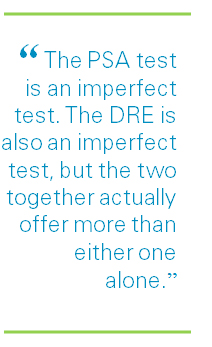 Before the PSA test was first used to screen for prostate cancer about 25 years ago, there were only two ways of detecting prostate cancer—pain and the DRE. Unfortunately, by the time the patient was experiencing pain, the cancer was usually advanced. Similarly, lumps and irregularities in the prostate caused by palpable tumors discovered by DRE represented cancers that were somewhat advanced. But back then, the DRE was the only prostate cancer screening tool doctors had.
Before the PSA test was first used to screen for prostate cancer about 25 years ago, there were only two ways of detecting prostate cancer—pain and the DRE. Unfortunately, by the time the patient was experiencing pain, the cancer was usually advanced. Similarly, lumps and irregularities in the prostate caused by palpable tumors discovered by DRE represented cancers that were somewhat advanced. But back then, the DRE was the only prostate cancer screening tool doctors had.
Both the PSA blood test and the DRE should be done,” says David Penson, M.D. He was commenting on the proposal by the American Academy of Family Physicians (AAFP) which was recommending against routinely screening for prostate cancer. Once again, the recommendation by AAFT was based on over-treating early stage prostate cancers by many physicians.
The DRE “has been part of the physical exam for decades, and to throw it out now because we don’t want to screen for prostate cancer . . . well, where does this stop, maybe we shouldn’t listen to hearts anymore,” says Pearson with exasperation. “The DRE is easy to do and incurs no cost, as the patient is already seeing the doctor, so why not do it?”
There is general agreement that, “the PSA test is an imperfect test,” he said. “The DRE is also an imperfect test, but the two together actually offer more than either one alone,” Pearson said.

BOB Comment:
We agree.

New Blood Test Could Replace PSA Test
Scientists from the Karolinska Institutet in Stockholm, Sweden say they have found a test, called STHLM3, which can screen for prostate cancer earlier than the PSA test.
Researchers say that the PSA test can sometimes result in unnecessary treatments, subjecting patients to needless pain and discomfort primarily because it cannot tell if a tumor is benign or aggressive.
The STHLM3 test, which has undergone trial in 58,818 men, analyzes a combination of six protein markers, over 200 genetic markers and clinical data (age, family history and previous prostate biopsies). Results show that the test reduced the number of biopsies by 30 percent without compromising patient safety. In addition, the STHLM3 test found aggressive cancers in men with low PSA values (1-3 ng/ml)—cancers that are currently going undetected.
The STHLM3 test will be available in Sweden in March of this year.

BOB Comment:
We will continue to look for any new developments in prostate cancer detection and will pass them along to our membership.

World’s First Proton Center for Children
Many proton treatment centers treat children, but only one proton center treats children only. The world’s first proton therapy center that treats only children had their grand opening on December 14, 2015. It is a three story complex at St. Jude Children’s Research Hospital in Memphis, TN.
Dr. James Downing, chief executive officer of St. Jude, called the center an engineering marvel that will “usher in a new era in the treatment of children with brain tumors, in solid tumors and with Hodgkin lymphoma—treatment that is not only going to advance our ability to cure these patients, but treatment that really is going to make sure that every child had the absolute best chance for living a long and productive life, free of the complications that can occur as a result of therapy.”
St. Jude’s expects to treat 100 children in 2016, and within three years, they plan to shift 80 percent of the research hospital’s patients to the more advanced proton therapy, according to Dr. Thomas Merchant, chairman of the St. Jude Department of Radiation oncology.
.gif)
We have been producing BOB Tales newsletters monthly for the past 15 years. Over the years there have been some important articles that many new members have not seen, and some older members may have forgotten. So, we decided to periodically re-run some articles from past newsletters. This one is from February 2003.
PSA Bumps—Usually False Alarm
PSA “bumps” following treatment are not uncommon. We recently heard from a BOB member who experienced a bump 16 months post-treatment. It caused him some anxiety. Month 23, however, was back on track. Following are his numbers beginning with his four-month PSA: 1.7, 0.7, 1.32, 0.42. This member is feeling much better and he encouraged us to share his story in our newsletter.
2016 Update
This member’s PSA is at 0.1.

Last month we mentioned that two other members had similar experiences. The fact is, PSA bumps can happen, and we shouldn’t panic when they do. They can be caused by many factors as we’ve all learned.
Typically doctors suggest that if there is a single PSA bump to repeat the test to rule out lab error. Then, look for other factors such as prostate infection. Sometimes the bump happens for no apparent reason. Radiation oncologists often tell us that the post-treatment PSA trend is never a straight line and to stop worrying about single readings. Most of the time PSA bumps are false alarms.
As always, you should discuss these matters with your doctor.

Recap: Christmas in the Bathroom?
Patients Spend Christmas Dinner at the Martell’s for 17 Years
People from all over the world come to Loma Linda University Cancer Center for proton therapy, but that means many patients need to spend the holiday away from family and friends. That is where Dr. J. Lynn Martell and his wife, Karen, come in. They have opened up their home to patients for 17 years in a row. At one time, they had over 85 patients and their family members breaking bread together. Unfortunately, this means some have to eat their meal in the bathroom.
 This past December, CBS Local News visited the Martell home and interviewed guests. One reporter personally tested the bathroom set-up.
This past December, CBS Local News visited the Martell home and interviewed guests. One reporter personally tested the bathroom set-up.
“Many have just been diagnosed with cancer and they are not quite sure what’s going to be happening and can’t be with their families. It’s a traumatic experience and this is one way Loma Linda can help,” said Dr. Martell, DMin, Director of Special Services at LLUCC.
Guests engage in parlor games and take a crack at making an accurate count of all the angels and Santa Clauses in the house where much of the furniture has been removed so that tables can be set up in rooms all over the 3,800-square foot residence.
One attendee said the Martell’s Christmas dinner is “really an extension of the cancer program at Loma Linda University Health, where patients bond through potlucks, support groups, lectures, restaurant tours, and golf and tennis outings.”
“Some are just finishing up treatment; some are just getting started,” said Martell. “And a few have come back—they came back for the dinner, not because they need another treatment.”
Read more and watch the video.
Upcoming: National Proton Conference 2016
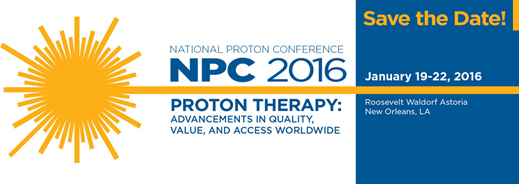
The National Association for Proton Therapy (NAPT) is holding its National Proton Conference in just a few days—January 19-22, 2016, at the Roosevelt Hotel, New Orleans, LA. Registration is open.
Special Acknowledgment
As we mentioned last month, NAPT informed us last month that Bob Marckini will be receiving a Lifetime Achievement Award at NPC2016 on January 21.
It’s not too late! NAPT is offering a discount for any BOB members who wish to attend the conference. They have established a special one-day rate of $250 for January 21 and $550 for the entire three-day conference. Enter the discount code “BOB” to get the discount when registering at www.npc2016.com.
More Conference Information
Exhibits: There are typically large halls filled with exhibits showing the latest developments in proton therapy technology, equipment, systems, and support systems. Information is presented on new particle accelerator design, new beam delivery systems, more precise control systems, and many things connected with proton therapy, including, the latest and greatest rectal balloon designs (!).
Attendance: Proton centers from all over the world send representatives to the annual conference. Often clinicians and clinical leaders from all the major U.S. proton centers are in attendance, many participate in panel discussions.
Panels and Presentations: Several presenters and panels will address a variety of proton related issues ranging from the latest developments in proton therapy research, clinical and technological advances in proton therapy, NAPT survey results, global proton initiatives, and the economics and sustainability of proton center development and growth.
Medical Insurance: This subject is always on the agenda with presentations and panel discussions about the latest developments, a subject of great interest to us prostate cancer survivors.
Meals and Social: Continental breakfasts and lunches are provided, and there are evening receptions where participants can mingle and learn.
Register now. Questions regarding the event can be sent to Lis Veilleux at NAPT.
.jpg) Upcoming: Proton Patient/BOB Member Reunion/Sedona, AZ
Upcoming: Proton Patient/BOB Member Reunion/Sedona, AZ
A proton patient and BOB member reunion will be held in Sedona, AZ on Tuesday, February 2, 2016. Visit the Sedona Golf Resort located on Hwy 179 and Trail Ridge Drive in the Village of Oak Creek for a day of golfing and camaraderie.
The golf package is $69.00 (plus tax) and includes range balls, a cart, and a buffet luncheon.
Don’t golf? Attend the lunch ($15.00 plus tax) and a special presentation on recent developments in proton therapy at Loma Linda University Cancer Center by Dr. Lynn Martell, DMin, Director Special Services.
Golf will begin at 9:00 a.m. and the luncheon/meeting will begin at 1:30 p.m.
RSVP: Karla Montalvo: 909.558.7756 or [email protected]. Let Karla know if you plan to bring a guest.

Ambassador Joseph Verner Reed: The Man
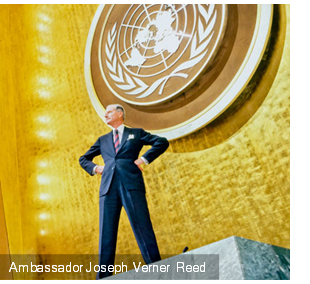 We’ve written about one of our most esteemed members, Ambassador Joseph Verner Reed, many times in the past. We’ve noted his numerous achievements and extraordinary experiences. Just a handful of his accomplishments are listed below.
We’ve written about one of our most esteemed members, Ambassador Joseph Verner Reed, many times in the past. We’ve noted his numerous achievements and extraordinary experiences. Just a handful of his accomplishments are listed below.
On the left, Joseph Verner Reed, Jr., strikes a pose on the rostrum of the General Assembly of the United Nations in early 1991. Photo by Jonathan Becker
- Ambassador Reed is the longest serving UN Under-Secretary General and Special Adviser to the UN Secretary-General.
- Upon graduation from Yale, he was appointed Private Secretary to Eugene Black, the President of World Bank. He then worked for Chase Manhattan bank as Chief of Staff to Chairman David Rockefeller.
- In 1981 he was appointed to his first diplomatic position. President Reagan asked him to serve as Ambassador to the Kingdom of Morocco.
- In 1985, Ambassador Reed was appointed by Reagan to serve as representative of the U.S. to the Ecomonic and Social Council, one of the three arms of the UN General Assembly, and as deputy permanent representative at the U.S. Mission.
- After two years, he was nominated by Reagan to serve as Under-Secretary-General of the UN for Political and General Assembly Affairs.
- Ambassador Reed received recognition for his 2010 work coordinating the efforts of the Yale University Press and the China International Publishing Group.
- He was involved in the negotiations between his alma mater and Peru for the return of thousands of artifacts taken from Machu Pichu in 1910 by explorer, Hiram Bingham. For his successful efforts, Peru awarded Ambassador Reed the Order of the Sun, the highest award bestowed by the nation of Peru to commend notable civil or military merit.
- In early 1989, President George Bush appointed Ambassador Reed the U.S. Chief of Protocol, where he served until late 1991.
- In 1992, the then Secretary-General of the UN, Dr. Boutros Boutros-Ghali, appointed him Under-Secretary-General of the UN and Special representative for Public Affairs, concluding his assignment in February 1997.
- In June 1997, Secretary-General of the UN Kofi Annan, re-appointed Ambassador Reed as Under-Secretary-General and President of Staff-Management Coordination Committee, the highest internal body of the World Organization.
We could continue these bullets for many more pages, but you get the point. Ambassador Reed is the Superman of Diplomats and one extraordinary human being. Once you’ve served under four U.S. presidents, become close friends with all four Secretaries-General of the UN, met with Nelson Mandela in the White House twice, dined with Queen Elizabeth, met with Pope Benedict XVI, and received your own Wikipedia page, you can probably assume you’ve made a difference in the world.
An article in the Greenwich Sentinel (Reed resides in Greenwich, CT), recently crossed our desk. Upon reviewing yet another laudatory article about one of our oldest (treated in 1997) and most revered members, we decided it was time again to get in touch with Ambassador Reed. But since we’d discussed his many accomplishments and accolades in every story we’ve written, and you could learn just about everything about him on the Internet, this time we wanted to focus on Ambassador Reed, the man. We wanted to know about his likes, dislikes, personal interests … We wanted to get to know him.
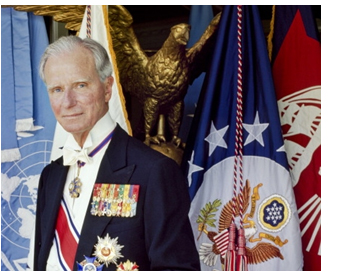 Deb was honored to join the call. “What should I call him?” She nervously asked her father minutes before dialing. Over the years, Bob and the Ambassador had developed a friendship. Reed had even invited Bob to visit and tour the United Nations in New York. “I call him Joseph,” Bob replied.
Deb was honored to join the call. “What should I call him?” She nervously asked her father minutes before dialing. Over the years, Bob and the Ambassador had developed a friendship. Reed had even invited Bob to visit and tour the United Nations in New York. “I call him Joseph,” Bob replied.
Although Ambassador Reed had been sending Deb emails of thanks (for the BOB Tales newsletter and other communications) over the years, she’d never heard his voice. “I’ll call him Mr. Ambassador.”
Deb’s nerves were immediately calmed when she heard Ambassador Reed’s pleasant voice on the phone. We thanked him for taking the time to speak with us. Deb told him that she was honored to speak with him. He told us that he was delighted to be on the call and spoke slowly and thoughtfully.
We spent a few minutes talking about his recently deceased wife, Mimi. She passed away this past year after a prolonged illness. They had spent nearly 60 years together and had a close and loving relationship. Since her passing, Ambassador Reed has kept busy. His last trip was to Morocco, his former post. “I traveled to Fez with David Rockefeller (age 100!) over the Atlas Mountains, to the city of Ouarzazate on the edge of the Sahara Desert. We ended up in Marrakech.”
After visiting Morocco, the two traveled to Paris and met up with Reed’s daughter, Electra, and her son, Vladimir. There, they visited the Palace of Versailles. “We saw a fabulous and huge plaque dedicated to John D. Rockefeller, Jr., David’s father, in appreciation of his help in restoring and rehabilitating Versailles, the Chateaux Fontainebleau, and both Reims and Chartres Cathedrals after WWI. It was staggering,” Ambassador Reed shared.
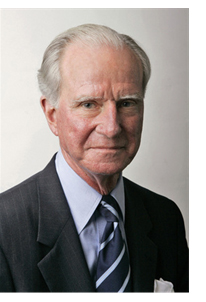 We asked him how he felt about the recent terror attack in Paris. “Dreadful, just dreadful,” he responded. At the time, his granddaughter, Maude, was living in the city. “She was deeply affected,” he told us. Ambassador Reed went on to discuss his sorrow over the San Bernardino, CA attack as well. He called his friends at LLU Health to express his sadness, while acknowledging them for the role they played in the healing process.
We asked him how he felt about the recent terror attack in Paris. “Dreadful, just dreadful,” he responded. At the time, his granddaughter, Maude, was living in the city. “She was deeply affected,” he told us. Ambassador Reed went on to discuss his sorrow over the San Bernardino, CA attack as well. He called his friends at LLU Health to express his sadness, while acknowledging them for the role they played in the healing process.
Ambassador Reed also spoke of his close, personal relationship with President George H.W. Bush and Barbara Bush. He has great admiration for both of them. They speak often and the Ambassador visits them when he travels to his home in Maine, which is close to the Bush’s home in Kennebunkport.
When asked about his devotion and commitment to the work of the UN, Ambassador Reed replied earnestly that he feels strongly about the UN civil servants role as saving children from starvation, providing clothing, food and shelter for thousands of refugees, delivering humanitarian assistance to devastated areas, and promoting peace throughout the world. His passion hasn’t dwindled with age. He still works several days a week at age 78.
We asked how he’s feeling these days and mentioned that it has been 18 years since he was treated with proton therapy for his prostate cancer at Loma Linda University Cancer Center. He told us he had an excellent outcome and still recommends proton therapy to friends and colleagues. “I feel fine … except when it rains,” he told us, referring to some aches and pains that come with age.
Ambassador Reed enjoys the moments he spends with daughters, Serena and Electra. Serena lives in Santa Barbara, CA and has three children. Electra is an education counselor living in the same town of Greenwich, CT. Her son, Vladimir, was adopted from Russia at six months old. Deb and Ambassador Reed spoke about some of the difficulties involved in the adoption process as well as the many blessings of building a family through adoption. Deb shared the journey she went through to adopt her daughter at birth from Ohio.
Bob asked, “Do you read the newsletter regularly?” Deb already knew the answer to that question because Ambassador Reed writes an email of thanks after every monthly issue is distributed. “All of it,” he responded. “I enjoy every word—and, I look forward to it.” We asked which section he enjoys most. His answer? “Every section—it’s wonderful.”
We asked, if he can ever spare a moment to himself, how he spends his time. “I watch Fox News,” he replied. He’s also a strong supporter of many charities. One, for example, is the American Museum in Tangier—the oldest U.S. owned property outside the United States and the only national landmark outside the U.S.
David Rockefeller describes Reed as a showman, a master organizer of people, trips and events, and in addition, a warm and delightful friend. Others have said, “Ambassador Reed was born to be Chief of Protocol.” Many say he was the best Washington has ever seen.”
We see Ambassador Reed as a very charitable man of tremendous warmth and charm. He’s been a strong supporter and contributor to proton research for years. Recently he joined the Heritage Society designating a portion of his estate to LLU Health on his passing.We asked him to tell us more about this. “I gave an unrestricted gift,” he responded, “they know best where to direct my contributions.” We asked if he had any last words for our members on the importance of “giving back” to the institution and the technology that has saved so many of our lives and maintained the quality of our lives. He answered, “Be as generous as you can.”
We are honored to have had the opportunity to speak with Ambassador Reed. We are also proud and privileged to have him as a member of our group. Thank you, Ambassador, for taking the time out of your busy schedule to talk with us. We wish you a joyous, restful, and healthy 2016, and many more years in your leadership role at the United Nations.
Member Feedback: Bob Marckini’s NAPT Lifetime Achievement Award
When we mentioned last month that the National Association for Proton Therapy (NAPT) will be presenting a Lifetime Achievement Award to BOB founder Bob Marckini at their 2016 conference, we received some wonderful feedback. Here is a sample of the feedback we received from readers:

Bob, your personal mission to bring proton therapy into the mainstream of prostate cancer treatment, including “yours truly,” has been fantastic and a demonstration of what one dedicated person can do! This award that you will receive in New Orleans in January is a capstone for all of your efforts; your guidance; your counseling; your writings; your speaking; and your personal assistance to so many men and their families. Thank you for all of these.

Congratulations to one of my true heroes in life. Bob, you are an inspiration to all of us. As for Loma Linda University Cancer Center, you all remain in a special part of my heart for the impact you all had on making me whole in every conceivable way. As for my PSA, it is interesting that I just got my latest blood test back yesterday and yes, for the tenth year in a row my PSA is lower than the year before—falling from its high of 10 to yesterday’s 0.20.
Good luck in your continued efforts to making a life altering difference on mankind at a time that so many are committed to achieving the exact opposite. Although we don't speak often, I still consider you a blessing in my life and a close friend.

Bob, I have witnessed a few awards in my day but cannot imagine one more deserved. Along with the award and the chair are the very grateful patients you brought into PBRT—the supreme award and reward.
Lots of people are reserving you a place up there.

I want to thank Bob for everything he has done over the years for so many of us. I also wish to offer my sincere congratulations for the long overdue recognition that he will receive from the National Association for Proton Therapy.
Member Feedback: Paying it Forward
One of our members had surgery for his prostate cancer in the early 1990s. Later, he had a recurrence. He chose proton therapy for salvage treatment in 1999 and has been cancer-free for the past 16 years. He recently told us about the side effects he suffered from surgery—the most troublesome, he reports, was urinary incontinence.
This member is on the patient reference list for men who have chosen proton therapy for salvage treatment following failed surgery. He tells us he speaks with two to three men each month. He tells them about his salvage proton treatment and the quality of his life after proton therapy.
The proton salvage patient reference list is just one of 30 reference lists in which our members volunteer to be contacted, by email and/or phone, by prospective proton patients. Volunteering to be on a patient reference list is just one of many ways our members give back.
All of our volunteers tell us that by helping prospective patients—answering their questions and talking about their personal experiences—makes them feel like they are doing their part to “pay it forward.”
If you would like to be listed on one of our reference lists, please send an email to Deb Hickey.
“A One Act Play” on Proton Therapy
Dozens of our members have websites and blogs promoting proton therapy for prostate cancer. No one is more proactive with this mission than Ron Nelson, author of “Protons versus Prostate Cancer—Exposed.”
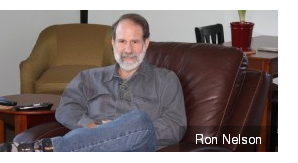 Ron took a unique approach in his “AP – The After Proton Blog” website recently. He, and many others of us who understand the clear benefits of proton therapy, has expressed frustration with The Wall Street Journal and reporter, Melinda Beck, for their less than objective articles on proton therapy.
Ron took a unique approach in his “AP – The After Proton Blog” website recently. He, and many others of us who understand the clear benefits of proton therapy, has expressed frustration with The Wall Street Journal and reporter, Melinda Beck, for their less than objective articles on proton therapy.
In several articles over the past few years, Ms. Beck, the WSJ Health Journal Columnist, has referred to proton therapy as a “costly new technology” with an “uncertain future” or with an “uncertain market” and “no proven advantage” over other treatment modalities.
We should note that 18 proton centers have been built in the U.S. with a dozen more in the planning stages or under construction. We can’t help but wonder what the Wall Street Journal knows that the finest cancer treatment facilities around the world—who have built, or are building proton treatment centers—don’t know.
This time, Ron Nelson decided to take a different approach to dealing with the WSJ articles on proton therapy by writing “A One Act Play.” It’s cleverly written and clearly spells out the advantages of proton therapy over other treatment alternatives.
Member’s New Blog
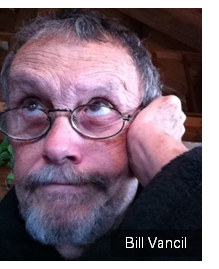 BOB member Bill Vancil is another author. He wrote “Don’t Fear the Big Dogs—Journey to Loma Linda,” and now he’s started a new blog, “Brainshowers.”
BOB member Bill Vancil is another author. He wrote “Don’t Fear the Big Dogs—Journey to Loma Linda,” and now he’s started a new blog, “Brainshowers.”
Known for his succinct writing and subtle sense of humor, Bill covers a variety of subjects in his blog, almost all based on his personal experiences and observations. Bill says of his blog, “One of my goals is to introduce more people to proton treatment. Proton will be a featured category and I will post new stories and information about the topic on a regular basis.” Besides prostate cancer, Bill has had some other medical challenges, including a liver transplant in 2010.
Bill jokingly describes Brainshowers as “informative, entertaining, and if nothing else, time-consuming.”

Proton Therapy—The Final Solution
Last month, we briefly told you about a young man named Daniel Alter. Daniel was one of many former proton patients interviewed by Dr. Lynn Martell at the 25th Anniversary Celebration of Loma Linda University’s James M. Slater Proton Treatment & Research Center in late October.
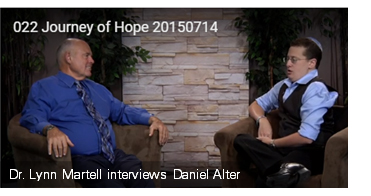 Dr. Martell recently interviewed Daniel for LLUCC’s Journey of Hope program which features inspirational stories of people who have confronted and overcome serious medical challenges. In the interview, Daniel shares his unbelievable struggle and journey to healing.
Dr. Martell recently interviewed Daniel for LLUCC’s Journey of Hope program which features inspirational stories of people who have confronted and overcome serious medical challenges. In the interview, Daniel shares his unbelievable struggle and journey to healing.
Strange Symptoms
When Daniel was a child living in Beaumont, Texas, he began to suffer from short bursts of what he calls “blinding headaches” in the lower back of his head. Often he would simply fall to the ground from pain and disorientation. He also had poor depth perception. He tried playing little league baseball, but missed hits and never came close to catching a ball. His mother took him to several doctors. They summed up his symptoms to a lazy eye or asthma.
When Daniel was twelve years old, he had a terrifying experience. The left side of his body became paralyzed for no apparent reason. About the same time, on a hike with his Boy Scout troop, Daniel fell five times within three hours while walking on flat surfaces. “Normally when you fall, you put your arms out to catch yourself,” Daniel said, “But I fell flat. I didn’t even know I was falling until I hit the ground. Something was wrong.”
A Terrifying Diagnosis
His parents took him to a local hospital where he received a cat scan. When the cat scan came up “funny,” the ER doctor called for an MRI. The MRI revealed a brain tumor, larger than a fist, which had wrapped itself around Daniel’s brain stem. Daniel was diagnosed with chordoma, a rare and malignant bone cancer.
Daniel’s doctors told his parents there was nothing they could do.
Daniel’s parents didn’t give up. The very day their son was diagnosed, they drove to a children’s hospital in Houston for further evaluation. The doctor they met with told the Alters they were “afraid to touch” Daniel. “Take him home and hug him,” he said.
Daniel was 12. The year was 1997.
Holding On to Hope
Still holding on to hope, the Alters and several family members and friends began to scour the Internet and pour over books. Research led them to a doctor in Arkansas. Within just a few days, the family flew to Little Rock. Daniel underwent another battery of tests and was then set to be treated immediately. Surgeons worked on Daniel for 17 hours. After a second surgery, doctors had removed 90 percent of the tumor. Another surgery was later performed because the tumor was eating away at Daniel’s vertebrae.
Surgery stopped when doctors saw that they were coming too close to cranial nerves that threatened paralysis in certain areas of Daniel’s face.
When surgeons had done all they could do, the doctor told them about proton therapy and Loma Linda University Cancer Center. They told the Alters it was the only viable option and that chemotherapy and traditional radiation would not work on this type of tumor.
Proton Therapy—The Only Viable Option
Daniel and his entire family packed up their suburban and drove to Loma Linda, California where Daniel received 42 proton treatments. He later attributed proton therapy as the “final solution” to his disease.
Since his treatment, Daniel has been speaking about proton therapy to many—he is present at each proton center anniversary and has remained a good friend to Dr. Martell and other LLUCC staff members.
Today, at age 31, Daniel is cancer free. In the years following his proton treatment, he became president of his senior college class, earned two bachelor’s degrees, two master’s degrees, and is now a year and a half away from becoming an ordained rabbi.
At the end of the video interview with Daniel, Dr. Martell asks, “What would you tell someone who was recently diagnosed?”
Daniel’s answer …
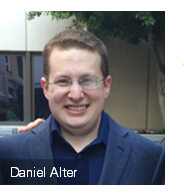 You are not your disease. So many people hear a diagnosis and instantly label themselves as what that is … You are you. You have to deal with some unfortunate things … and it can be really rough. But remember who you are. In Judaism we teach about two kinds of feelings—healing and curing. Curing is getting rid of the virus. Healing is of the mind and of the spirit. These two are independent. Some can be cured but never healed. Some are healed, but never cured … You are bigger than whatever it is you’re facing.
You are not your disease. So many people hear a diagnosis and instantly label themselves as what that is … You are you. You have to deal with some unfortunate things … and it can be really rough. But remember who you are. In Judaism we teach about two kinds of feelings—healing and curing. Curing is getting rid of the virus. Healing is of the mind and of the spirit. These two are independent. Some can be cured but never healed. Some are healed, but never cured … You are bigger than whatever it is you’re facing.
Since the end of his proton treatment, Daniel has been sharing his experience and speaking about proton therapy to many. He is present at every LLUCC proton center anniversary celebration and has remained a good friend to Dr. Martell and other LLUCC staff members.

Daniel is one of hundreds of children that have been treated with proton therapy at LLUCC for devastating and potentially debilitating conditions. Because of the precision of the proton beam, physicians can provide higher doses to the tumor site with superior control. This leaves the patient with minimal side effects and reduced chances of secondary malignancies later in life.
With children, the benefits from proton therapy are even more important because radiation exposure to the brain in young children is associated with the potential for significant cognitive function damage.
Watch Daniel Alter’s video interview.
Please Help Advance Proton Therapy for Pediatric Cancer Patients
Make a Future Gift:
Contact Todd Mekelburg at the Office of Planned Giving at Loma Linda University Health at 909-558-4553 or email [email protected].
Donate to the Marckini Chair:
- Send a check made out to “LLUCC Proton” to Loma Linda University Health, Office of Philanthropy, P.O. Box 2000, Loma Linda, CA 92354. Memo line: “Marckini Chair.”
- Donate online or call Elvia DeHaro at 909-558-5010.
Other Ways to Give:
Contact Matt Miller at the Office of Philanthropy at Loma Linda University Health at 909-558-3284 or email [email protected].

Best and Worst Foods for Preventing Colon Cancer
Both of Bob Marckini’s parents had colon cancer. His mother passed away from colon cancer when she was 87. Bob’s older sister passed away from a long battle with colon cancer last year. Bob, Deb, and other family members are screened every three years with a colonoscopy. Deb had her first exam a couple of months ago at age 43.
Worst: Alcohol
In the colon and rectum, bacteria can convert alcohol into large amounts of acetaldehyde, a chemical that has been shown to cause cancer in lab animals.
Worst: Red Meat
Grilling, charring, and high heat produce harmful HCAs that could be damaging to the colon. Avoid processed, salted, smoked, or cured meats. The nitrate preservatives used to add flavor and color have also been linked to cancer.
Best: Salmon
Salmon is full of omega-3 fatty acids. Research suggests these healthy fats may help slow colon cancer growth and potentially reduce the development of colorectal tumors.
Best: Brown Rice
Brown rice is packed with nutrients. It’s also high in fiber, which helps clear toxins from the digestive tract. Brown rice has also been shown to reduce colon polyps.
Best: Vegetables
Researchers found that eating cooked green vegetables at least once a day was linked to a 24 percent reduction in the risk of colon polyps. Cruciferous vegetables can also keep your gut healthy due to anti-inflammatory compounds.
Best: Beans
Legumes are high in cancer-busting fiber. One study indicates that people who eat legumes three times a week have a 33 percent lower risk of colon polyp growth.
Best: Fruit
One study shows that eating dried fruit three times a week or more could help stave off colon cancer risk by 24 percent. Fresh fruits may also promote a healthier colon. Apples contain pectin. Pectin may produce compounds that protect colon cells. The antioxidants in apples may also help slow cancer cell growth.
3 Tips to Beat the Holiday Bulge
Americans typically gain four to six pounds during the winter holiday season. Most are unsuccessful at removing this extra weight after the season ends. Here are three suggestions from Wayne Westcott, Ph.D. author and exercise science fitness research teacher at Quincy College in Massachusetts:
- Drink water frequently throughout the day. Cold water acts as an appetite suppressant and burns calories as it warms to body temperature.
- Eat low-calorie fruit and vegetable snacks rather than high-calorie foods from vending machines.
- Eat high-fiber foods, such as prunes, to aid gastrointestinal transit processes. These and other dried fruit, such as figs, dates, apricots and raisins, are ideal for satisfying the sweet tooth and have an extremely low fat content.
10 Flu Vaccine Myths
According to ShareCare, close to 50,000 people in the US will die this year from the flu, and more than 200,000 will be hospitalized. The fact is, the flu shot works. It can help prevent the flu in most people and/or minimize the effects of the flu. Yet, many people avoid the flu shot believing in one or more of the following myths:
- I still have time. Flu season hasn’t started yet. The timing of flu season is unpredictable. It tends to peak in December through February, but can be around for much longer than that.
- I’m protected because I had a flu shot last year. This is not true. Your body’s immunity decreases over time—especially for older people—and the virus strains often change year to year. A fresh vaccine is needed every year.
- I can’t get the flu shot because I have a cold. It’s okay to have a flu shot with a cold, as long as your fever is not above 101.
- Flu vaccines are only for older people. This is not true. The Center for Disease Control and Prevention (CDC) recommends the flu vaccine for anyone six months and older. In rare cases, such as those with Guillain-Barre Syndrome or those who are seriously ill, the vaccine should be avoided. But these cases are rare.
- I’ll probably catch the flu anyway. The flu vaccine cuts your flu risk 50 – 70 percent and even if you do catch the flu, it reduces symptoms substantially.
- The flu shot will make me sick. The flu shot is made from inactivated flu virus which cannot give you the flu. The most common reaction is soreness or redness at the injection site. A very small percentage of people will get a low-grade fever and aches as the body builds up an immune response. Most people have no reaction.
- I’ll just take antibiotics if I get the flu. Antibiotics are for bacterial infections. They don’t treat viral infections like the flu.
- I’m pregnant, so I shouldn’t get the shot. This is not true. The flu vaccine protects you and your baby. And the flu is more likely to cause severe illness and complications if you are expecting.
- The flu isn’t a big deal. If you’re thinking this, then you’ve probably never had the flu. Most vulnerable are adults over 65, children under 2, women who are pregnant, people with asthma and other chronic medical conditions, and people who are morbidly obese.
- I have to make a doctor’s appointment to get a flu shot. Flu shots are given in numerous locations and appointments are usually not needed. These locations include pharmacies, health clinics, the workplace (in some instances), and even grocery stores.

“Bob is my hero.”
Bob Marckini’s book, “You Can Beat Prostate Cancer And You Don’t Need Surgery To Do It,” is still wavering between the No. 3 and No. 4 position on a search for “prostate cancer” on Amazon.com out of 44,562 search results. The book has 242 reader reviews on Amazon—still more than any other book in the top 50.
A recent review is below.

“Bob is my hero.” By Twinpipeson, December 10, 2015
This is a MUST read for anyone who has prostate cancer and is trying to decide on treatment! As a fellow survivor I could totally relate to Bob's story which is told so well. Thank goodness for proton beam radiation therapy!
Spanish Translation Available
Thanks to the generosity of one of our members, our book has been translated into Spanish and will soon be available to the Latin community around the world.
Buy Online
Paperback: $19.00--•--Kindle: $9.99--•--NOOK Book: $9.99--•--Apple iBook: $9.99
Buy in Bulk
Email [email protected] for a discount price list. Proceeds from book sales support proton therapy research through the Robert J. Marckini Endowed Chair at LLUCC.
Help Us Help Others
Was Bob’s book helpful in making your proton treatment decision? If so, please post a review on Amazon to help others find it more easily. The more quality reviews, the higher the book ranks in Amazon’s search engine.
Once you are logged into your Amazon account, click here and click “Create your own review” button. Don’t forget to rate the book from 1 to 5 stars!

Incredible Facts about the Human Body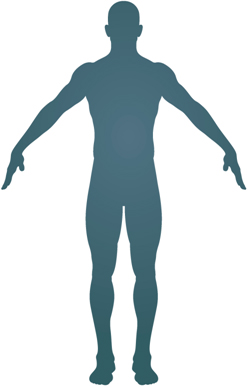
This is part of a four-part series on incredible facts about the human body. The human body is, without a doubt, the most incredible and complex “machine” on the face of the planet. In an age where mankind sends people into space and keeps coming up with greater inventions, the human body is still full of undiscovered mysteries. In this series, we share some of them with you:
Part III of IV
- Your kidneys are incredibly efficient. They filter out 95 percent of the water in your blood for re-use, and 99 percent of the salts. Also they filter 50 liters of blood a day.
- If you accidentally cut off your fingertip, as long as the last joint is still intact the fingertip will grow back.
- Human babies are stronger than an ox, pound for pound.
- There are approximately 100 billion neurons in the human brain which is roughly the same as the number of stars in the Milky Way.
Thoroughly Useless Facts
- In China, the day a baby is born it is considered one-year-old.
- Leonardo da Vinci could draw with one hand and write with the other ... at the same time.
- A bee uses 22 muscles to sting you.
- The National Safety Council reports that the object most often choked on is the toothpick.
Quote of the Month
“My doctor told me to stop having intimate dinners for four … unless there are three other people present.” —Orson Welles
Last Month’s Brain Teaser
Which stars do the following letters stand for?
AAAACCCDFGHIIIIIKLMMMMMMMM NNNNNNNNOOOPRSSTTUVVWWWW
Answer: They stand for the stars on the American flag. Each letter represents the first initial of each of the 50 U.S. states.
Winner: We tried something different when choosing the December/January brain teaser winner. One of our members had suggested we collect all of the answers over a two week period and then choose, at random, a winner from those who answered correctly (like pulling a number out of a hat). This allows readers who are away from their computers when the newsletter is issued plenty of time to answer the teaser and be entered into the drawing for a signed copy of Bob’s book.
Our first ever “random drawing” winner is Mike Layman of Newberg, OR. When we informed Mike that he had won, he said, “I’ve sent you several answers in the past, but knew that my replies would be late since I often don’t read the newsletter until several days have gone by. So, I applaud this new method of selecting a winner—it gives everybody a fair shot.”
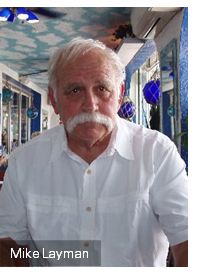 Mike’s Diagnosis
Mike’s Diagnosis
In 2007, Mike had a ladder collapse under him and he ended up in the hospital with broken ribs. While there, he had blood in his urine and was sent to a urologist who discovered prostate cancer. “It was a big surprise to me,” Mike said. His doctor recommended surgery.
While digesting the information given by Mike’s urologist and doing their own research, Mike’s wife, Vicky, heard about proton therapy and LLUCC through a local Seventh-day Adventist church. Mike was fascinated and immediately called for more information and to make an appointment.
Comforted by what he learned, Mike started proton treatment in August 2007. He underwent 19 proton radiation treatments and 25 X-ray treatments. “It was a vacation, really,” Mike said. “I took my 1968 MGB roadster with me for local transportation and explored Southern California. I enjoyed it very much.”
His Days as a U.S. Marine
Mike is a retired U.S. marine. He spent two tours in Vietnam, once as a Corporal (crew chief and gunner on a medevac helicopter) and later as a Captain, (tank officer). In both tours, Mike was exposed to Agent Orange and was also exposed to radiation while participating in the 1961 atomic tests at Johnston Island in the Pacific. This could have had something to do with his prostate cancer, he suspects.
During his time with the Marines, Mike spent time on both U.S. coasts, spent three years in Hawaii, and three years in Athens—it was in Athens where he met Vicky in the early 1980s. Then Mike spent two years in Vietnam and two years in Okinawa, Japan.
Hot Air Balloons and Sports Cars
When he retired from the Marine Corps, Mike worked for Makita power tools for twenty years. At that time, he also started flying hot air balloons. “I gave balloon rides in Central California where I lived,” Mike said. He also participated in the Albuquerque International Balloon Fiesta, the Great Reno Balloon Race, and most of the balloon rallies in the Western states. Mike then started a little side business—“Teenie Weenie Airlines”—offering rides to adventurous passengers. These days, he mostly enjoys riding around in his two MG sports cars.
Congratulations, Mike! A signed copy of Bob’s book is on the way.
New Brain Teaser
These words follow a rule: beech, fir, pear and plum. These words do not follow it: birch, cherry, elm and palm.
Can you find the rule?
Answer next month: Send your brain teaser answers to [email protected].
Smart Kid Stories
So, Who’s the Dumb One?
A young boy enters a barbershop and the barber whispers to his customer, “This is the dumbest kid in the world. Watch this.”
The barber puts a dollar bill in one hand and two quarters in the other. Then he calls the boy over and asks, “Which do you want, son?” The boy takes the quarters and leaves.
“What did I tell you!” The barber says.
Later, when the customer left, he saw the boy coming out of an ice cream parlor and asked him, “Hey son, may I ask you a question? Why did you take the two quarters instead of the dollar bill?”
The boy licked his cone and replied, “Because the day I take the dollar the game is over.”
Lost and Found
A lady lost her handbag at the mall. A young lad found it and returned it to her. Looking at her purse, the lady said, “Hmm, that’s funny. When I lost my bag, there was a $50 bill in it. Now there are two 20s and a 10.”
The boy replied, “It’s not that funny, ma’am. The last time I found a lady’s purse and returned it, she didn’t have any small bills for a reward.”
Bedtime
A father was putting his young son to bed. Jimmy was finding all kinds of excuses for delaying the process. After two glasses of juice, making a bathroom trip, hearing three bed-time stories and saying prayers, Jimmy said, “Dad, can I have one more glass of juice?” “No,” said the father. The boy said, “Why not, Dad?” With a twinkle in his eye, the father said, “Because I said so, and you know I’m king of the juice.”
Without hesitation, Jimmy said, “No you’re not. I learned at Bible School that Jesus is King of the Juice.”

Clay Christensen (Harvard Business School) on Religious Freedom
Some time ago, I had a conversation with a Marxist economist from China. He was coming to the end of a Fulbright Fellowship here in Boston and I asked him if he had learned anything that was surprising or unexpected. And without any hesitation, he said, “Yeah, I had no idea how critical religion is to the functioning of democracy.
The reason why democracy works,” he said, “is not because the government was designed to oversee what everybody does. But rather democracy works because most people, most of the time, voluntarily choose to obey the law. And in your past, most Americans attended a church or a synagogue every week and they were taught there by people who they respected.
My friend went on to say that, “Americans follow these rules because they have come to believe that they weren’t just accountable to society; they were accountable to God.” My Chinese friend heightened a vague but nagging concern that harbored inside . . . that as religion loses its influence over the lives of Americans, what will happen to our democracy? Where are the institutions that are going to teach the next generation of Americans that they too need to voluntarily choose to obey the laws? Because if you take away religion, you can’t hire enough police.
And, of course … Low PSAs to all!
Bob Marckini and Deb Hickey
To print the BOB Tales newsletter or view the newsletter with a larger font size, click here for the PDF file.
NO MEDICAL ADVICE: Material appearing here represents opinions offered by non-medically-trained laypersons. Comments shown here should NEVER be interpreted as specific medical advice and must be used only as background information when consulting with a qualified medical professional.
